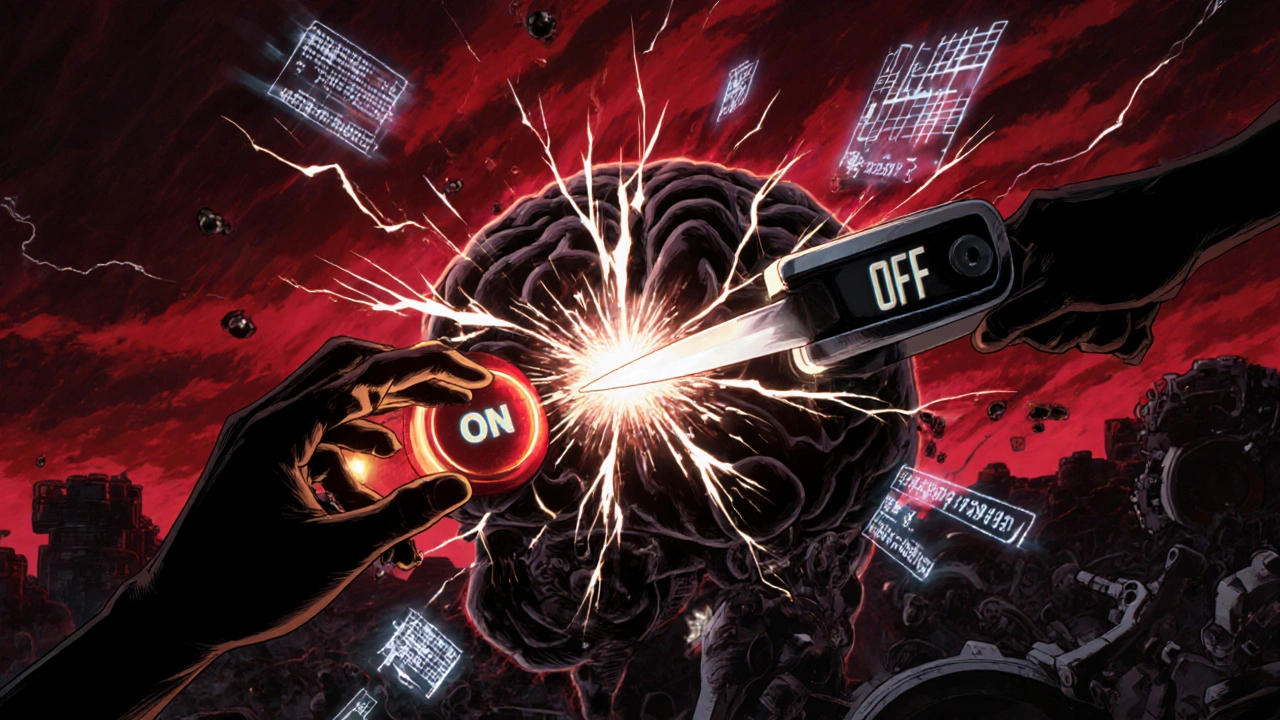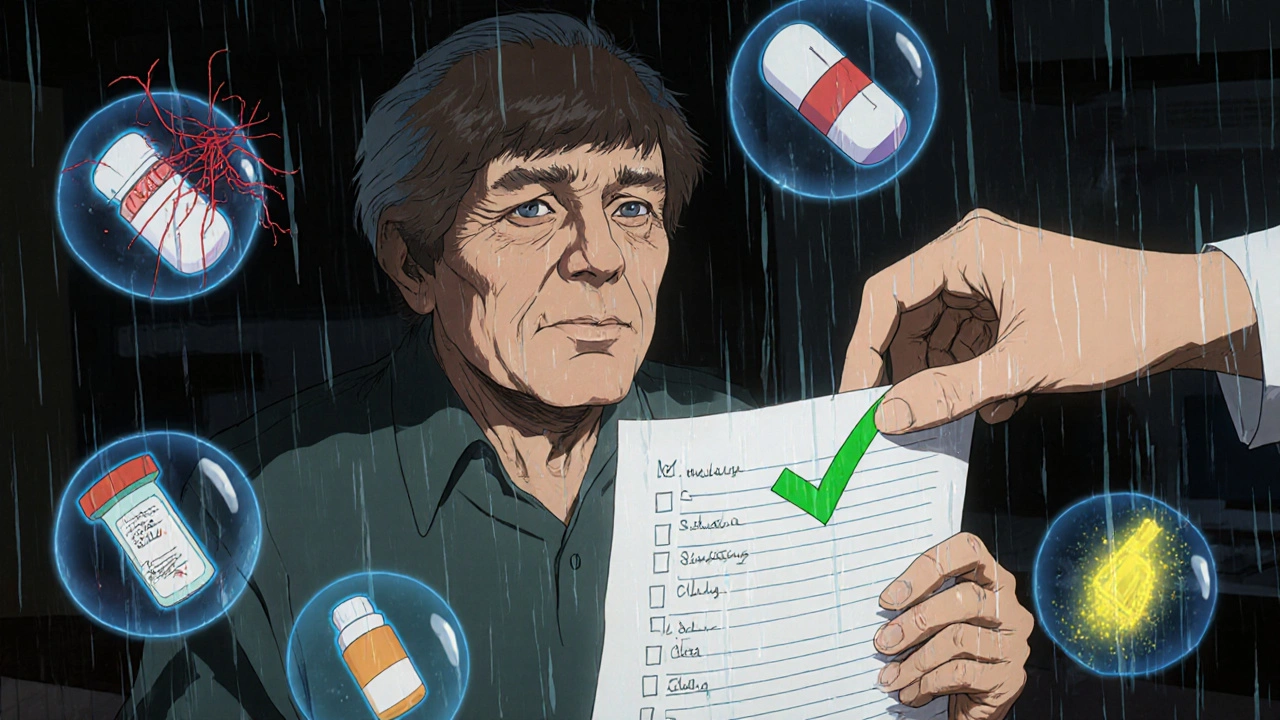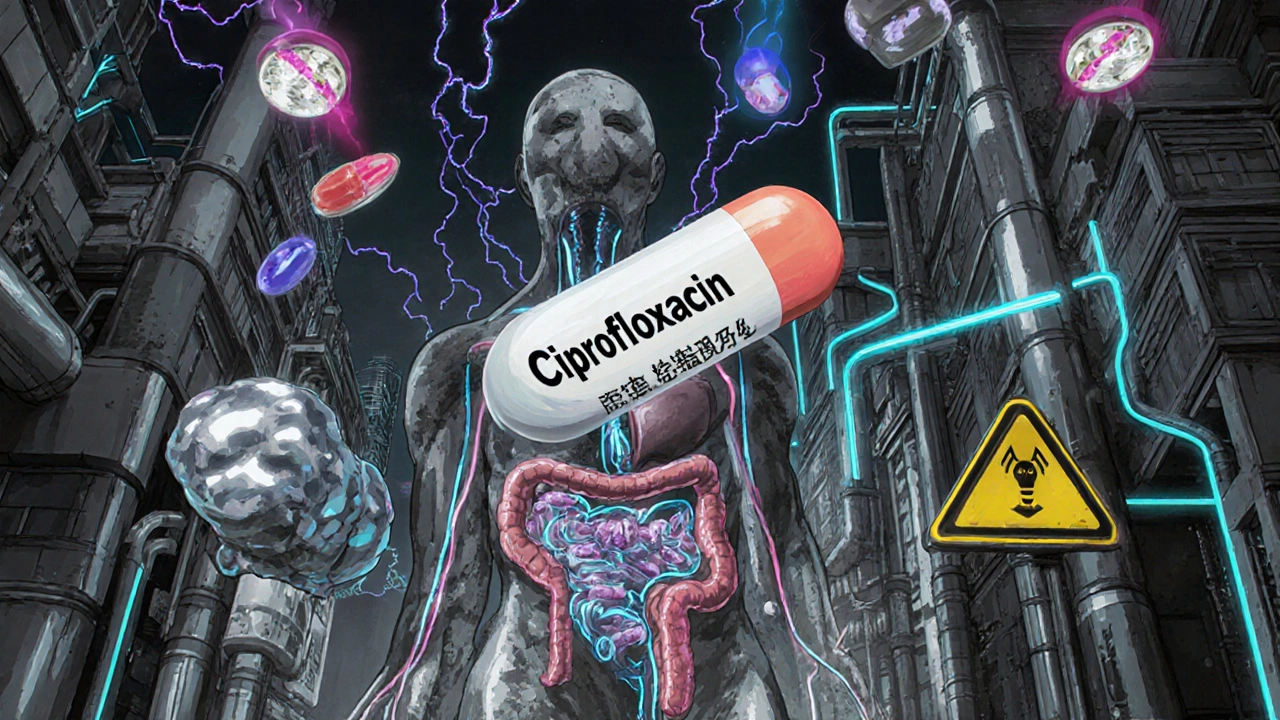Two drugs taken together can sometimes do more harm than good-not because they’re dangerous on their own, but because of how they interact inside your body. These interactions fall into two main categories: pharmacokinetic and pharmacodynamic. Understanding the difference isn’t just for doctors and pharmacists. If you’re taking multiple medications-especially if you’re over 65-you need to know how these interactions can change your treatment, cause side effects, or even land you in the hospital.
What Pharmacokinetic Interactions Really Mean
Pharmacokinetics is about what your body does to the drug. Think of it like a delivery system: how the drug gets in, moves around, gets broken down, and leaves your body. This process is called ADME-absorption, distribution, metabolism, and excretion. A common example is taking an antacid with an antibiotic like ciprofloxacin. Antacids contain magnesium or aluminum, which bind to the antibiotic in your gut and block its absorption. Studies show this can cut the antibiotic’s effectiveness by 75-90%. That’s not a small drop-it could mean your infection doesn’t clear up. Another big player is your liver. About 75% of all drug interactions happen because of enzymes there, especially CYP3A4, CYP2D6, and CYP2C9. These enzymes break down drugs so your body can get rid of them. But some drugs slow them down or speed them up. Take clarithromycin (an antibiotic) and simvastatin (a cholesterol drug). Clarithromycin shuts down CYP3A4, so simvastatin builds up in your blood. One study found this combo increased simvastatin levels by 10 times. That’s not just a warning-it’s a real risk for muscle damage or even kidney failure. The FDA says if you’re on clarithromycin, your simvastatin dose should drop to 10 mg or less. Even your kidneys matter. Probenecid, a drug used for gout, blocks the kidney’s ability to flush out penicillin. That’s actually useful in some cases-it helps penicillin last longer in your system. But if you’re not aware of it, you might think the antibiotic isn’t working because you didn’t feel better right away.What Pharmacodynamic Interactions Are All About
While pharmacokinetic interactions change how much drug is in your blood, pharmacodynamic interactions change how your body responds to that drug-even if the amount hasn’t changed. Think of it like this: two people walking into a room and both pressing the same light switch. One is trying to turn it on, the other is trying to turn it off. The result? The light doesn’t work. That’s antagonism. A classic example is naloxone reversing an opioid overdose. Naloxone doesn’t reduce the amount of opioid in your blood-it just blocks the opioid receptors, stopping the drug from working. Same concentration, completely different effect. Then there’s synergy. Sildenafil (Viagra) and nitroglycerin (used for chest pain) are a dangerous combo. Each one lowers blood pressure on its own. Together, they can drop it so low you pass out-or worse. This isn’t just additive; it’s explosive. Additive effects are more common. Warfarin (a blood thinner) and aspirin both increase bleeding risk. Together, they don’t just add up-they multiply it. That’s why many people on warfarin are told to avoid NSAIDs like ibuprofen, even for a headache. CNS drugs are especially tricky. Antidepressants, antipsychotics, and opioids often interact pharmacodynamically. One study found that 85% of dangerous interactions involving these drugs are pharmacodynamic, not pharmacokinetic. Serotonin syndrome-a life-threatening condition caused by too much serotonin-is often the result of combining SSRIs with other serotonergic drugs like tramadol or certain migraine meds.Why the Difference Matters for Your Health
The big difference between these two types of interactions isn’t just science-it’s how you manage them. Pharmacokinetic interactions often show up slowly. If you start a new antibiotic and your cholesterol drug suddenly causes muscle pain a week later, it’s probably because the enzyme got blocked. That’s why therapeutic drug monitoring (TDM) helps. Doctors can measure the actual drug levels in your blood and adjust the dose. But pharmacodynamic interactions? They can hit you fast. Take your first dose of a new painkiller with your blood pressure pill, and your systolic pressure drops 40 points within an hour. No warning. No time to adjust a dose. You just need to stop the combo. This is why guidelines from the UK’s Specialist Pharmacy Service and the American Society of Health-System Pharmacists stress that pharmacokinetic interactions can often be managed with dose changes-but pharmacodynamic ones often require complete avoidance. For example, mixing MAO inhibitors (used for depression) with SSRIs (like sertraline) can cause serotonin syndrome. There’s no safe dose. No way to tweak it. You simply can’t take them together.
Who’s Most at Risk?
You don’t have to be elderly to be at risk-but age increases the chance. About 15% of adults over 65 take five or more medications daily, according to CDC data from 2022. That’s a lot of chances for interactions. Narrow therapeutic index drugs are especially dangerous. These are drugs where the difference between a helpful dose and a toxic one is tiny. Warfarin, digoxin, phenytoin, and lithium fall into this group. About 68% of serious interactions with these drugs are pharmacokinetic-meaning a small change in metabolism can push you over the edge. People with liver or kidney disease are also more vulnerable. If your liver can’t break down drugs as well, or your kidneys can’t flush them out, even normal doses can build up. And don’t forget over-the-counter meds and supplements. St. John’s wort, for example, speeds up CYP3A4, which can make birth control, antidepressants, and even some cancer drugs stop working. Many people don’t even tell their doctor they’re taking it.How Modern Systems Are Helping
Electronic health records now flag dangerous combinations. Epic’s 2023 system, for instance, alerts doctors to over 1,200 high-risk pharmacokinetic interactions and nearly 1,000 pharmacodynamic ones, using updated databases like the Flockhart Table. Pharmacogenomics is also stepping in. The Clinical Pharmacogenetics Implementation Consortium (CPIC) now has 32 gene-drug pairs that help predict who’s more likely to have bad reactions. For example, if you’re a poor metabolizer of CYP2D6, even a normal dose of codeine could be dangerous-it turns into morphine too slowly in your body. AI is getting better at predicting interactions too. A 2023 study in Nature Medicine showed an AI model could predict pharmacodynamic interactions with 89% accuracy-better than traditional methods. But the most effective tool? A pharmacist. A 2022 survey from the American College of Clinical Pharmacy found that when pharmacists manage medication reviews, adverse drug events drop by 42%.
What You Can Do
You don’t need to be a scientist to protect yourself. Here’s what actually works:- Keep a list of every medication you take-including vitamins, herbs, and OTC drugs. Update it every time something changes.
- Ask your pharmacist: “Could any of these interact?” Don’t assume your doctor knows all your meds.
- If you start a new drug and feel weird within days-fatigue, dizziness, muscle pain, unusual bleeding-call your provider. It might be an interaction.
- Never stop or start a drug because you read something online. Talk to a professional first.
- For high-risk drugs like warfarin or digoxin, stick to the same pharmacy. They’ll track interactions better than switching between places.
The Bottom Line
Pharmacokinetic interactions change how much drug is in your system. Pharmacodynamic interactions change how your body reacts to it. One is about quantity. The other is about quality. Most people think drug interactions are about pills clashing like chemicals in a lab. But it’s deeper than that. It’s about your body’s response, your liver’s capacity, your kidneys’ speed, and even your genes. The good news? These interactions are predictable. They’re documented. They’re flagged in systems used by hospitals and pharmacies every day. The bad news? Too many people still don’t know they exist-or how to ask about them. If you’re on more than three medications, especially if you’re older or have chronic conditions, don’t wait for a problem to happen. Ask your pharmacist or doctor: “Could any of my drugs be interacting in a way I should know about?” It’s not paranoia. It’s prevention.What’s the difference between pharmacokinetic and pharmacodynamic drug interactions?
Pharmacokinetic interactions affect how your body processes a drug-its absorption, distribution, metabolism, or excretion. This changes the drug’s concentration in your blood. Pharmacodynamic interactions affect how the drug works at its target site-like receptors or enzymes-changing your body’s response even if the drug level stays the same.
Can pharmacokinetic interactions be fixed with a dose change?
Yes, often they can. If a drug is being broken down too slowly by your liver, your doctor may lower the dose. For example, when clarithromycin slows down the metabolism of simvastatin, reducing the simvastatin dose prevents muscle damage. Therapeutic drug monitoring helps guide these adjustments.
Why are pharmacodynamic interactions harder to predict?
Because they depend on how your body’s systems respond to multiple drugs at once. Two drugs might act on the same receptor (like beta-blockers and beta-agonists), or affect parallel pathways (like NSAIDs reducing the effect of blood pressure meds). These effects aren’t always obvious from drug labels and can vary between people.
Which drugs are most likely to cause dangerous interactions?
Drugs with a narrow therapeutic index-like warfarin, digoxin, phenytoin, and lithium-are high-risk because small changes in concentration can cause toxicity. Also, CNS drugs (antidepressants, opioids), anticoagulants, and cardiovascular meds are common culprits. Interactions involving CYP3A4-metabolized drugs (like statins, some antibiotics, and immunosuppressants) are especially common and dangerous.
Should I stop taking a drug if I think it’s interacting with another?
Never stop a prescribed medication without talking to your doctor or pharmacist. Some interactions require switching drugs, not stopping. For example, if you’re on warfarin and need an NSAID for pain, your provider might recommend acetaminophen instead. Stopping abruptly can be just as dangerous as the interaction itself.
Can supplements cause pharmacokinetic or pharmacodynamic interactions?
Absolutely. St. John’s wort induces CYP3A4 and can make birth control, antidepressants, and transplant drugs less effective. Garlic and ginkgo can increase bleeding risk when taken with blood thinners-this is a pharmacodynamic interaction. Even grapefruit juice can block CYP3A4 and raise levels of certain statins and blood pressure meds.
How often do these interactions lead to hospital visits?
In the UK, drug interactions cause about 6.7% of all hospital admissions, according to the Specialist Pharmacy Service. Pharmacokinetic interactions account for nearly half of those, and pharmacodynamic for about a third. Many of these are preventable with better communication and medication reviews.

John Mackaill
November 24, 2025 AT 10:49Man, I had no idea grapefruit juice could mess with statins like that. My grandpa swears by it for his cholesterol, never thought it could be dangerous. I’ll make sure he reads this. Thanks for breaking it down.
Adrian Rios
November 26, 2025 AT 00:04Okay, let me just say this-this is one of the clearest explanations of PK vs PD I’ve ever read. Like, seriously. I work in pharma sales and I’ve had to explain this to doctors who still mix them up. The way you used the light switch analogy for antagonism? Genius. And the part about naloxone? That’s textbook perfect. I’ve seen people panic when their opioid overdose patient doesn’t respond to Narcan fast enough, not realizing it’s not about concentration-it’s about receptor blockade. This post should be mandatory reading for every med student and every patient on five or more meds. Seriously, someone needs to send this to the FDA’s patient education team.
Brandy Walley
November 26, 2025 AT 04:46shreyas yashas
November 27, 2025 AT 11:19As someone from India, I see this all the time-people buying antibiotics over the counter and popping them with antacids or even turmeric milk. No one checks interactions. My cousin took cipro with milk and wondered why her UTI didn’t clear up. She didn’t even know milk has calcium. Simple stuff, but no one teaches it. We need more public awareness, not just for old folks but for young people too.
Suresh Ramaiyan
November 28, 2025 AT 07:28It’s fascinating how the body isn’t just a chemical reactor-it’s a symphony. One instrument plays too loud, and the whole piece falls apart. Pharmacokinetics is like changing the volume knob on a violin. Pharmacodynamics is like swapping the violin for a trombone-same note, totally different sound. That’s why I think we need to move beyond ‘drug A + drug B = bad’ lists. We need to teach people how their body listens to these drugs, not just what they contain. The real danger isn’t the pills-it’s the silence around them. No one talks about this until someone ends up in the ER. And by then, it’s too late.
Katy Bell
November 29, 2025 AT 23:21My mom was on warfarin and started taking ibuprofen for her arthritis. One day she just… bled. Like, everywhere. She didn’t even realize it was the painkiller. We almost lost her. This post? It saved me from making the same mistake with my dad. Thank you.
Ragini Sharma
November 30, 2025 AT 03:48Linda Rosie
November 30, 2025 AT 12:31Pharmacodynamic interactions are often more clinically significant than pharmacokinetic ones due to their immediate and unpredictable nature.
Vivian C Martinez
December 1, 2025 AT 01:59Hey, I just wanted to say-this is so important. I’m a nurse and I see people getting sent home with 7 prescriptions and zero idea what they’re for. If you’re taking more than three meds, ask your pharmacist to do a med review. It’s free at most places. Seriously. Do it. It could save your life. And if you’re over 65? Even more so. You’re not being paranoid-you’re being smart.
Ross Ruprecht
December 2, 2025 AT 19:50Okay but like… who even cares? I just take my pills and hope for the best. My doctor knows what they’re doing.
Suzan Wanjiru
December 3, 2025 AT 11:42St. John’s wort is a sneaky one. I took it with my birth control and got pregnant. Didn’t even know it could do that. Now I tell everyone. Also, don’t take it with SSRIs unless you wanna end up in the psych ward. I speak from experience.
Dalton Adams
December 4, 2025 AT 06:06Let me just say-I’ve read every paper on CYP450 since 2018. This post is… acceptable. But you missed the fact that P-glycoprotein also plays a huge role in absorption. And you didn’t mention the 2021 JAMA study on gut microbiome modulation of drug metabolism. Also, the Flockhart Table is outdated. CPIC guidelines updated in 2023 now include CYP2C19 for clopidogrel. You’re 2 years behind. 🤦♂️
Kane Ren
December 4, 2025 AT 18:05Man, I used to think drug interactions were just hype. Then my buddy took tramadol with his SSRI and ended up in the hospital with serotonin syndrome. He’s fine now, but he’s got a new respect for his meds. This post? Perfect. Keep sharing stuff like this. We need more of it.
Charmaine Barcelon
December 6, 2025 AT 10:27You people are so careless. You take random supplements and wonder why you feel weird? You don’t even know what’s in them! I’ve seen people take ginkgo with blood thinners and then pass out in the grocery store. It’s not a joke. You need to stop being lazy and start listening to your doctor. No one’s asking you to be a pharmacist-but you could at least read the label.
Karla Morales
December 7, 2025 AT 15:53AI predicting pharmacodynamic interactions with 89% accuracy? 🤖 That’s impressive. But let’s not forget: algorithms don’t feel the tremors, the dizziness, the nausea. Humans do. So while tech helps, nothing replaces a pharmacist who actually talks to you. 💊🫂